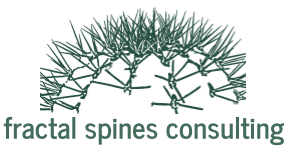Research Summary
Understanding Trauma Work and Opioid Use Disorder
The correlation between adverse childhood experiences, such as abuse and neglect, and opioid use has been well-documented. Adding to this knowledge base, a new study examines the different ways people with opioid use disorder view connections between their experiences and addiction. These findings hold implications for treatment plans and interventions, and add nuance to the ways we understand recovery.
Researchers recruited participants from Dayton, Ohio who had been diagnosed with opioid use disorder and had recently used non-prescribed buprenorphine. These participants were interviewed about their experiences with opioid use and treatment history. While reviewing the data, researchers noted how frequently participants disclosed adverse childhood experiences and the salience with which these experiences represented their addictions. Studying these responses can add complexity to traditional ways of assessing adverse childhood experiences and their role in behavioral health beyond only enumerating the forms or intensity of abuse.
Several themes emerged that described participants’ relationship with childhood abuse or maltreatment. One group of participants was still living their trauma and actively identified using opioids to move through their memories. For these individuals, trauma seemed to control their ability to narrate responses both physically and linguistically, and had a similar hold on participants’ concept of their addiction. Interventions for this group need to highlight safety and should include skill development related to mindfulness or remaining present. Another group was focused on their survival trajectory. Their stories of abuse highlight the participants’ active role in stopping or recovering from trauma. Survival and the power of overcoming were critical themes to these participants’ understanding of their addiction as well. For these respondents, addiction was another harm they could conquer. Interventions for this group should involve confronting adverse childhood experiences alongside addiction, and can include a focus on pursuing a future filled with potential. Some study participants’ view of the trauma they have experienced was defined by the ways others perceived them. These individuals acknowledged their abuse and its connection to addiction, yet minimized its impact. Often their disclosures were informed by the speakers’ experiences with racism and other biases, and prompted questions of whose pain is given legitimacy or who is allowed to be a victim. For this group, interventions that allow for self-directed treatment and the strength of choice may be helpful. Allowing these participants to explore their needs unencumbered by social expectations, and without shame, would be beneficial. The last main theme the respondents presented was viewing both abuse and addiction as inevitable. These participants struggled with intergenerational trauma and at some points sought comfort in the familiarity of opioid use. Healing and recovery for these individuals can address cycles of harm and should incorporate the resources needed to interrupt them. Redeveloping or redefining relationships can also be helpful for this group.
This sample shows the need for individualized care and patient-driven interventions for both trauma recovery and opioid use disorder. These narratives demand attention to the complexities of adverse childhood experiences, the ways sociopolitical, systemic, and interpersonal factors influence modes of recovery, and provide further evidence of the need for trauma-informed recovery processes. The different ways patients process and understand their trauma need to be addressed when comprehensively providing resources and cultivating healing.
Importantly, the different ways subjects held their experiences of abuse alongside their opioid use disorder shows the need for recovery work to start with trauma-informed care.
